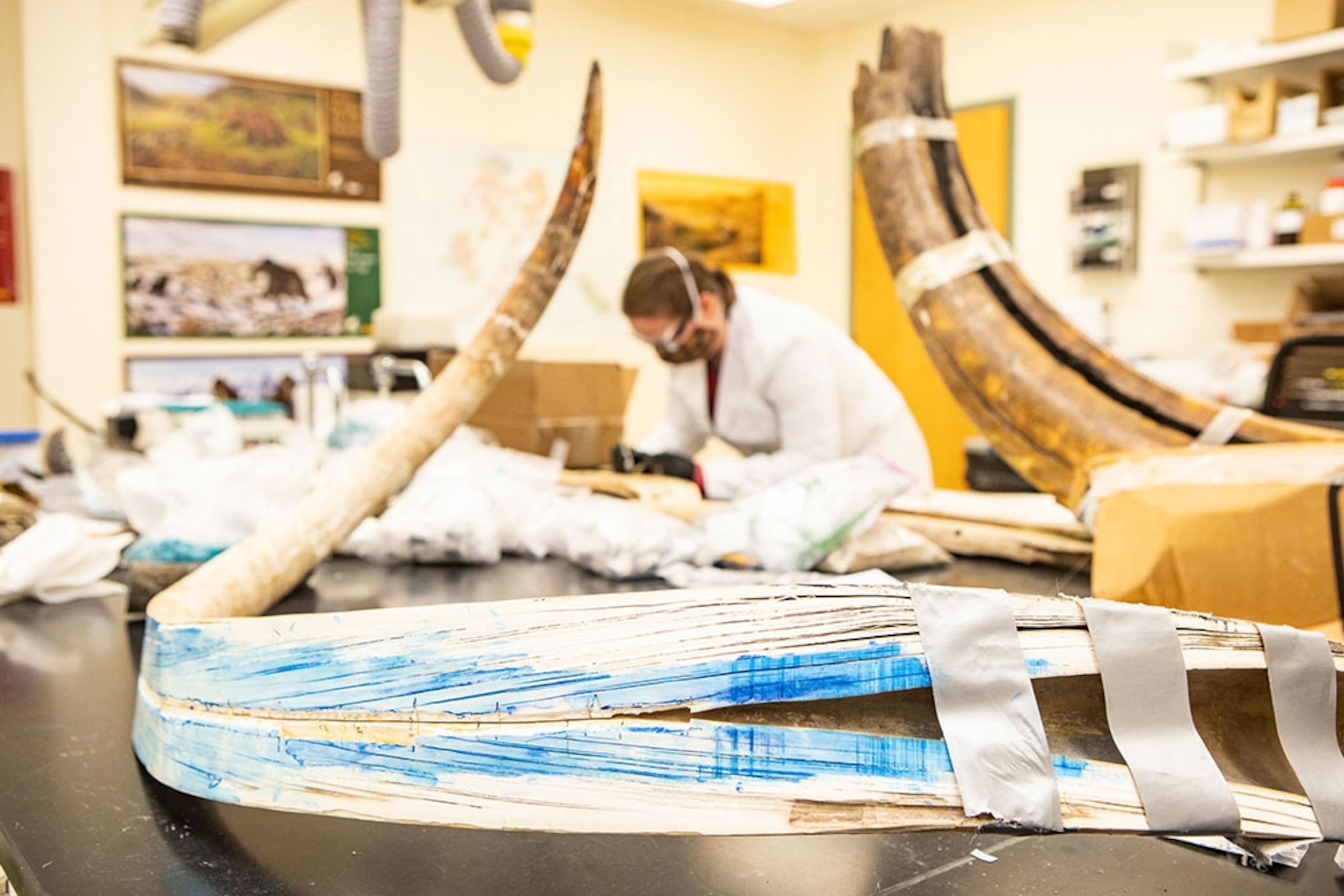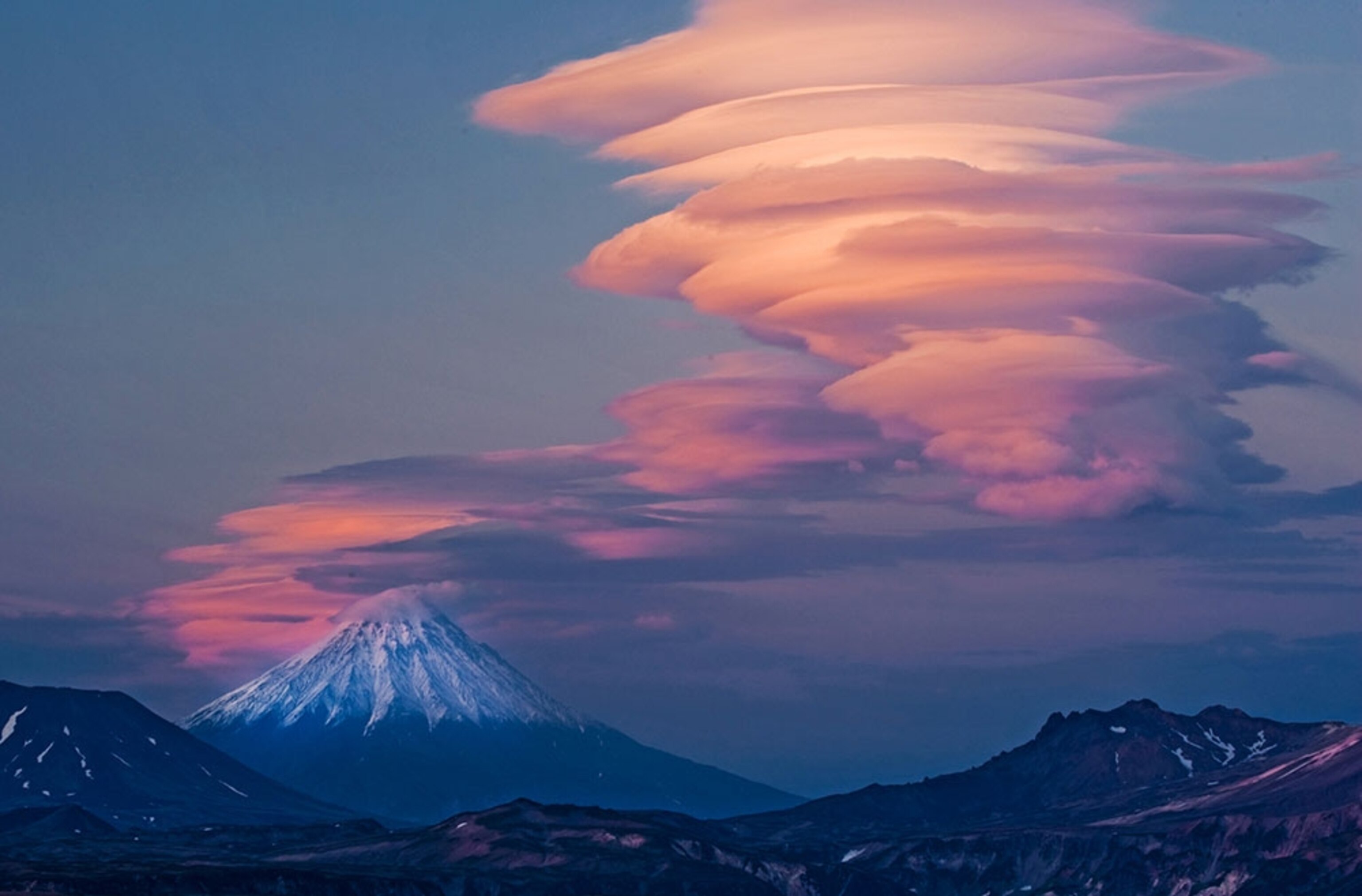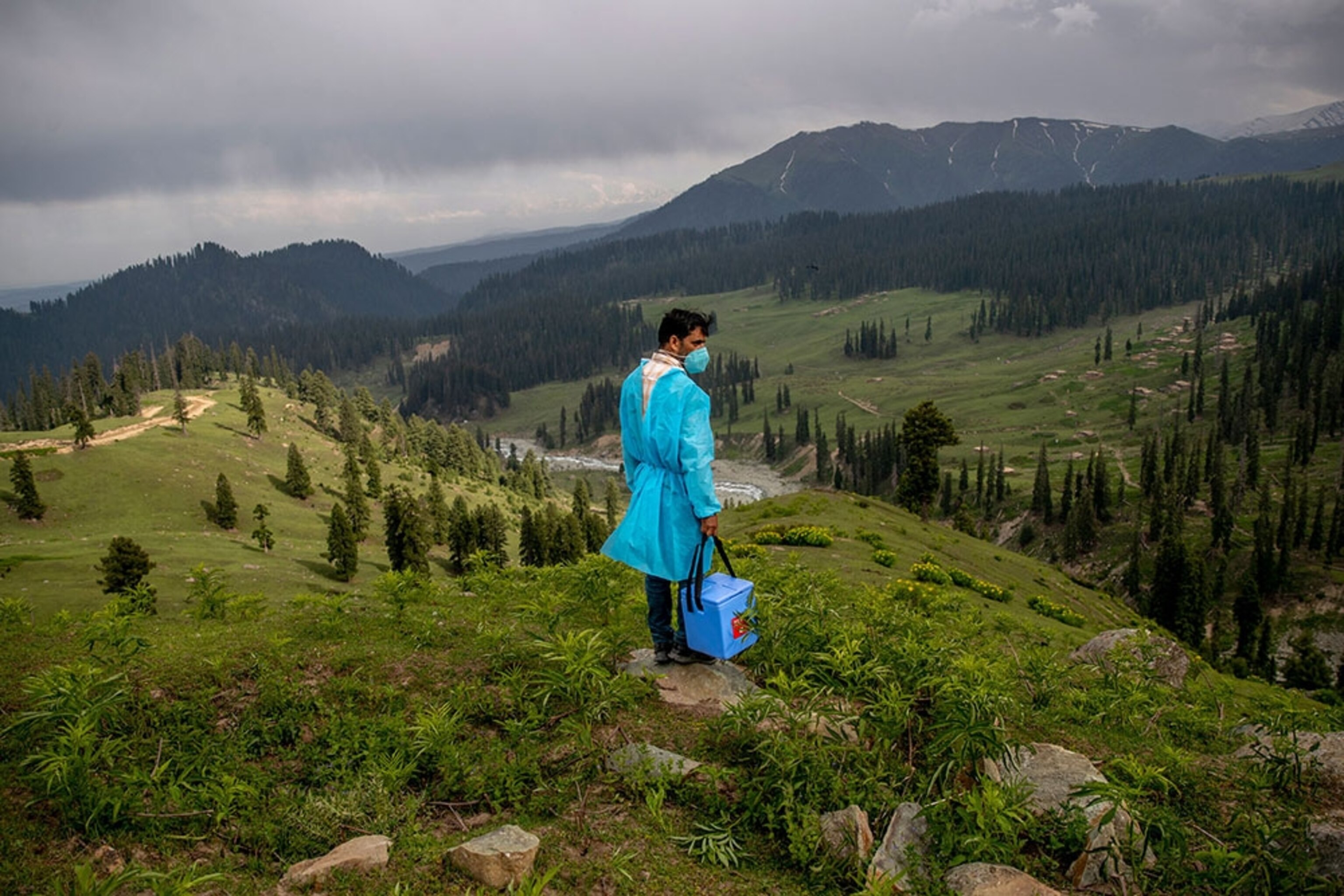
A 17,000-year-old tusk tells an extraordinary Ice Age tale
In today’s newsletter, booster shots for Americans; an amazing lenticular; the discovery of asteroids; why quakes hit Haiti … and how Saturn got so slushy.
This article is an adaptation of our weekly Science newsletter that was originally sent out on August 18, 2021. Want this in your inbox? Sign up here.
By Victoria Jaggard, SCIENCE executive editor
Once upon a time, a male woolly mammoth was born in what is now northeastern Alaska. Nicknamed Kik, the mammoth spent a pleasant childhood moving across cold-weather grasslands populated by a bountiful menagerie of bison, caribou, lions, and musk oxen. As a teenager, he broke away from his herd and started ranging farther north, tagging along with caribou on their migrational path. Caribou in Alaska today still make a version of this seasonal journey—but Kik and his kin were headed toward a grimmer fate.
Kik lived about 17,100 years ago, when Pleistocene glaciers were retreating and the landscape was changing. It’s unclear exactly why, but scientists know Kik starved to death at the relatively young age of 28. About 4,000 years later, woolly mammoths (pictured above) disappeared completely from mainland Alaska, and debate rages about which existential threat—humans, or climate change, or both—brought the species to extinction.
Now, though, scientists can draw clues from Kik’s incredibly detailed biography, which was unveiled last week in the journal Science. The study is remarkable for weaving together so many lines of evidence. As Zach St. George reports for us, a massive team of researchers had to blend classic data sources with advanced technology to reconstruct Kik’s story. Among the tools at their disposal, the team used a bandsaw, lasers, a museum’s collection of vole teeth, and ancient DNA extraction to translate the chemicals trapped in Kik’s excavated tusk (pictured below) into an epic Ice Age tale.
According to Vanderbilt University paleontologist Larisa DeSantis, the effort was worth it: The researchers came as close as possible to reconstructing this animal’s life, short of “going back in time and putting a GPS collar on a woolly mammoth.”
In the realm of paleontology, finding new fossils is always a thrill and is often the moment that drives headlines. But I am in awe of the depth and breadth that went into this mammoth study because this team turned a single tusk into a goldmine of behavioral information. The fine details are what truly brought Kik the mammoth back to life, and what brought a tear to my eye reading about his untimely end. Kik’s life is also a cautionary tale, as today’s big mammals stare down an increasingly warmer world.
As DeSantis notes: “We’re living in a world in which humans and climate change are both having impacts on animals. If that was the deadly combination that led to the large animal extinctions that happened in the Pleistocene, we really need to be cautious.”
Do you get this daily? If not, sign up here or forward this to a friend.
TODAY IN A MINUTE
Booster shots: The U.S. government plans to dispense an additional COVID-19 vaccine shot to shore up resistance as the Delta variant spreads. People who took Pfizer and Moderna vaccines should get a third jab, and health officials are examining data to see if those who took the Johnson & Johnson one-shot vaccine will need another dose as well, the AP reports. More than one million Americans already have received additional vaccine doses, Jillian Kramer reports.
How did humans discover asteroids? Well, early astronomers were hunting for planets first, NASA scientist Jennifer Scully tells us. They thought there must be planets between Mars and Jupiter. As they discovered more and more smaller things there, they began imagining the belt of asteroids we now know today, Scully explains in this Nat Geo video.
Why Haiti? The second disastrous earthquake in 11 years in the Caribbean nation occurred on the same fault line between tectonic plates, explains Nat Geo’s Maya Wei-Haas in her examination of the seismology behind Saturday’s quake. The death toll has risen to nearly 2,000 from the latest temblor, Haiti’s government says.
The rise of weed-killing robots: A few farmers have begun using 10-foot-long, 9,500-pound robots to shoot lasers as weeds in their fields. The robots save on pesticides, one farmer tells the Guardian.
INSTAGRAM OF THE DAY
Sunset in Kamachatka: Lenticular clouds hover over Kronotsky stratovolcano on the Kamachatka Peninsula, in remote far eastern Russia. Photographer Michael Melford decided to hike to higher ground when the clouds were forming in the afternoon. “The volcano is in the heart of a protected nature reserve, and very few people are allowed to visit,” he tells Nat Geo. About 3,000 visitors each year can come for the day, by helicopter, to the Valley of Geysers. Should there be places on Earth that are totally closed off to visitation? Should the wilderness be open for all or restricted in some way? Let us know your thoughts.
ALL ABOUT CLOUDS
THE BIG TAKEAWAY
A jab in the wilderness: Workers are boating, dogsledding, and trekking through the Himalaya (pictured above) to deliver coolers of COVID vaccines to the world’s most remote places. One carrier motored five days through the rivers of Peru to give cylinders of oxygen to a community in need. The scale and urgency of the current vaccination efforts are unlike any in modern memory, Maya Wei-Haas reports.
THE NIGHT SKIES

Just after sundown: Set your gaze toward the very low west soon after sunset tonight to catch a very close encounter between Mars and Mercury. The two inner solar system planets will appear about 0.1 degrees apart—easily fitting in the field of view of both binoculars and even telescopes. Move fast: the planetary pair will set about an hour after the sun. On Thursday Jupiter officially reaches opposition, when it appears opposite in the sky from the sun, and it offers its best views for 2021. Look for the largest planet in the solar system to rise in the east after sunset, offer amazing views all night, and then set around sunrise. Binoculars can reveal Jupiter’s many moons.
IN A FEW WORDS
Wherever they are, lions are threatened by human activities to the point that if we keep the status quo, there will be no lion roars in the wild in the not-so-distant future.
Tutilo Mudumba, Conservation biologist, Nat Geo Explorer
THE LAST GLIMPSE
Slushy Saturn: Studying subtle waves in Saturn’s rings, scientists have made a surprising new discovery about the planet’s core. It’s ice, rock, and gas, blended into a soupy mass with blurry edges, Nadia Drake reports. The planet’s rings (pictured above) record Saturn’s internal sloshing and pulsing.
This newsletter has been curated and edited by David Beard and Monica Williams, and Jen Tse has selected the photos. Have an idea or a link to share? We'd love to hear from you at david.beard@natgeo.com. Thanks for reading!




